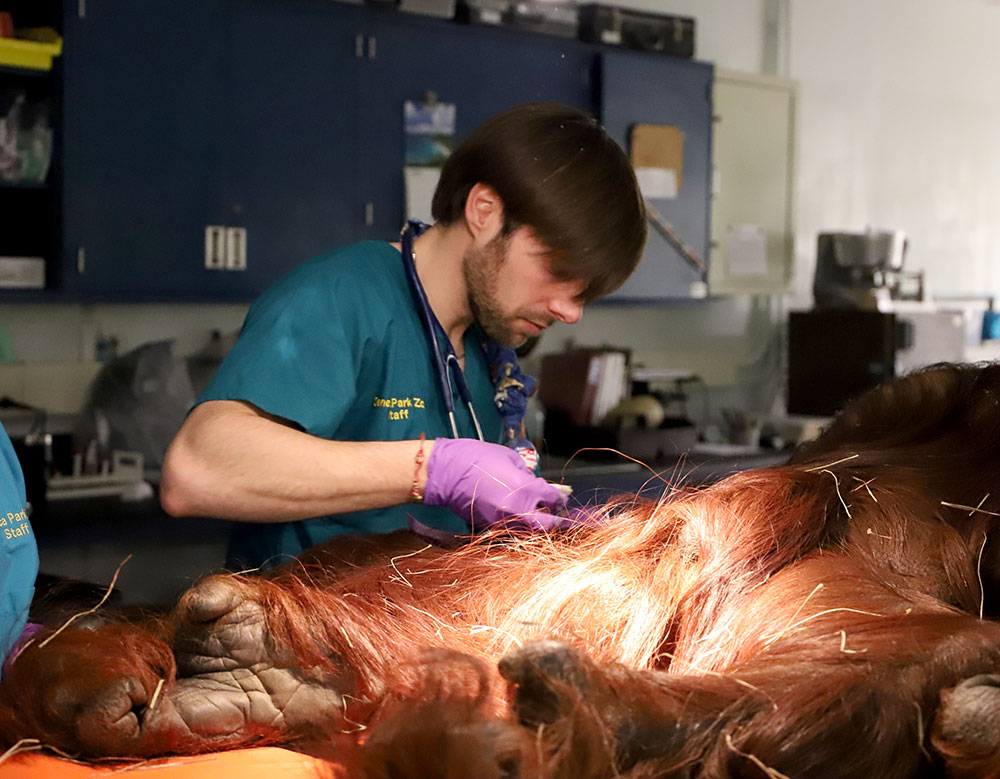March 18, 2018
With old habitats closing and new habitats opening, quite a few of our animals are traveling this spring! There is a lot of preparation involved in sending an animal from one zoo to another. The whole process usually starts with a recommendation by the Species Survival Plan (SSP), a collaborative effort among accredited zoos to maintain the genetic diversity of species in conservation care consistent with the needs of each zoo. When we receive a recommendation to move an animal, Garrett Caulkins, Zoo Registrar, contacts the other zoo to share important information about that animal, like diet and medical history.Their veterinarian and I discuss the animal’s health and determine what we need to do to make sure that animal is healthy enough to travel. We also want to ensure that the animal has no diseases or parasites that might be spread to the other animals at the Zoo. Usually, what we call a pre-shipment examination is performed – it’s just a fancy way of saying the veterinarian does a good check-up on the animal before the shipment. This way, the health of each animal coming into the Zoo is well-characterized before it arrives, so we don’t have to address it immediately. This allows time for the animal to acclimate to its new home. During the pre-shipment exam, we listen to the animal’s heart and lungs, obtain fecal and blood samples, take radiographs, update vaccinations, and perform any other screening tests specific to the species. For example, for primates, we might do a tuberculous test under the skin just like a person might have done. Once all the test results are available and the animal is fit for travel, moving arrangements are made.Many times, a familiar keeper will travel with the animal to its new home to make sure the journey is safe and to help make the transition smoother. After arrival, depending on the animal, it may be housed in the Zoo hospital for quarantine or in its habitat if the animal has special needs. For example, our new giraffe will be quarantined once they arrive in their new habitat in A Step into Africa. We are very sensitive to animal welfare, so our goal is to get any new animals into their new home and comfortable living with any new companions as quickly as possible. For the first month or so, we monitor the animal closely every day to make sure that they are eating normally and integrating into their habitat, social group, and routine. Our keepers, curators, and vet staff all work together through issues like introducing the animal to the existing group or letting it into a new habitat space for the first time. As a result of our thorough planning, preventive health program, and concern for animal welfare, most animals make the transition really well!– Dr. Louis DiVincenti, Director of Animal Health and Conservation








